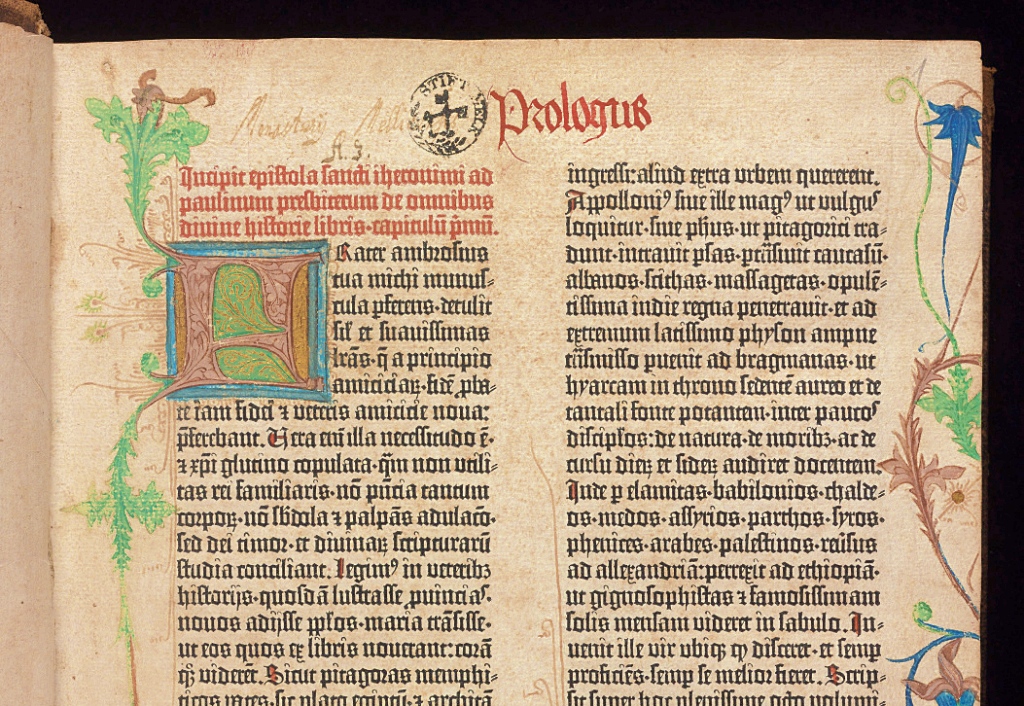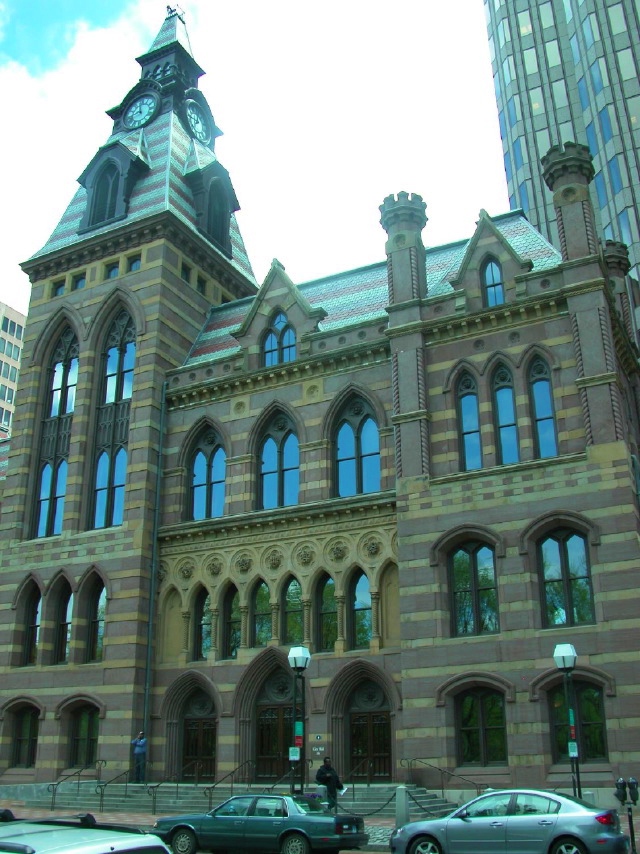A Bit of History
Although New Haven, 81 miles (130 km) northeast of New York City, was founded in 1638, as Quinnipiac, the crucial year in its history was 1718, when Connecticut's "Collegiate School" for the training of young men for the ministry—later to become Yale University—decided to make its permanent and perpetual home in New Haven, ignoring the suits and blandishments of the other notable Connecticut towns of Hartford and Saybrook.
Perhaps the college came to New Haven because a local man offered a good deal of financial assistance, and in fact it was for this assistance that the school's name was changed to honor Elihu Yale.
New Haven has never been the same. Although today it is a town of business and industry—small arms, the telephone company, the county government—it is still more than anything the city where Yale is, and the presence of the great university dominates New Haven's social and cultural life.
Unless you have a special interest in one of New Haven's attractions, you can see the high points in a day's visit, or even a half day.
Transportation
Two major highways pass by the city, many trains and buses come through, so it's easy to go to and from New Haven.
Distances
Boston MA: 138 miles (222 km) NE
New York City: 75 miles (121 km) SW
Hartford CT: 36 miles (58 km) N
Hyannis, Cape Cod MA: 176 miles (283 km) E
New London CT: 46 miles (74 km) E
Providence RI: 103 miles (166 km) NE
Train
Frequent commuter trains operated on the New Haven Line by Metro North depart New York City's Grand Central Terminal hourly from about 7am until after midnight on weekdays, with even more frequent runs during rush hours.
The trip by Metro North to New Haven takes 1 hour and 40 minutes.
Service on Saturday, Sunday, and holidays is almost as frequent, with trains at least every 2 hours.
The big advantages of the Metro North trains over Amtrak (see below) are lower fares, more frequent trains, and the convenience of Grand Central Terminal (Midtown Manhattan).
Amtrak runs trains daily between New York City's Penn Station and Boston's South Station along the coastal route via New Haven.
Amtrak trains are more comfortable than Metro North trains, but an Amtrak ticket costs significantly more than a Metro North ticket.
Train travel times between New Haven and:
New York City: 1-1/2 hours
New London CT: 1-1/4 hours
Mystic CT: 1-1/2 hours
Boston MA: 3 hours
Bus
Greyhound and Peter Pan operate daily buses between New York City, New Haven, and Hartford.
They also have services between New York and New London, and on to Providence RI and Cape Cod MA. The trip from New York City to New Haven takes about 1 or 1-1/2 hours, depending on stops. More...
CT Transit also operates inter-city buses in southwestern Connecticut. More...
Car
New Haven is easily reached from New York City via I-95, but this road carries heavy truck and commuter traffic.
A more pleasant alternative from New York City is to take the Hutchinson River Parkway to the Merritt Parkway and the Wilbur Cross Parkway (both toll roads) (map). These roads allow only passenger vehicles; heavy vehicles are prohibited.
From Hartford and the north, take I-91 south to Meriden, then the Wilbur Cross Parkway. From the east, I-95 is the only fast road.
Plane
Because of the efficient bus and train transportation between New Haven and New York City and its many airports, most travelers traveling to New Haven fly via New York. More...
For the record, Hartford's Bradley International Airport is 53 miles (85 km) north of New Haven, and Providence's T F Green Airport is 96 miles (155 km) east.
Where to Stay
Several hotels are right in the center of New Haven, within walking distance of the New Haven Green and Yale University campus. Other hotels are grouped by the interchanges of Interstate 95 and the Wilbur Cross Parkway (CT Hwy 15), only a few miles north of the city center.
Use this Hotel Map with Prices to find the lodgings you want, at a price you want:
Hotel Map with Prices
What to See & Do
Most of what you want to see and do in New Haven is related to Yale University and its collections of artistic and scientific wonders.
Start your explorations on New Haven Green, the spacious park at the city center. The Yale University campus is north and west of the green. You can join a campus tour at the Visitor Center.
Allocate time for Yale's world-class museums: the Yale University Art Gallery, the Yale Center for British Art, and the Peabody Musum of Natural History. The university libraries are also worthy of time.
A short walk from the New Haven Green is Grove Street Cemetery with its Egyptian Revival gateway and the graves of such New Haven greats as cotton gin inventor Eli Whitney, lexicographer Noah Webster, and rubber-vulcanizer Charles Goodyear.
In the evening, theater! The Yale Rep is world-renowned.
New Haven Green
New Haven Green.
Once the town's common cow pasture, New Haven Green today is its central park, a pretty traditional New England town green in the midst of a modern city.
The three churches on the green have illustrious heritages of design, for Gothic-style Trinity Episcopal Church (1814-1816) is said to have been modeled somewhat on England's York Minster.
Center Church (UCC) and United Church-on-the-Green (UCC) are both said to have sprung from early plans for London's famous St. Martin's-in-the-Fields.
Besides being common pasture land, the Green was New Haven's principal burying ground (cemetery) until severe yellow fever epidemics in 1794 and 1795 produced more burials than it could accommodate. In fact, Center Church was built on a part of the Green that had been a burying ground until 1797. In the church's crypt you can see over 100 of the early gravestones. Guided tours of the church are offered Tuesday through Sunday.
Three blocks northeast of the green is Grove Street Cemetery, America's first chartered burial ground (1797), which received deceased New Haveners after the Green proved inadequate. It's a beautiful final resting place for such eminent New Haven citizens as Noah Webster, Eli Whitney (inventor of the cotton gin), and Charles Goodyear (inventor of vulcanized rubber).
Yale University
New Haven's prime attraction is Yale University, over three centuries old, founded in 1701 and moved to New Haven in 1716. For nearly 300 years, it's been New Haven's most famous institution.
Harkness Tower, Yale University, New Haven CT.
Yale's American Collegiate Gothic campus buildings are the city's main attraction, along with its numerous art and science museums, and theaters.
Yale Visitor Center
The starting place for free campus walking tours, and all your explorations of Yale, is the Visitor Center at 149 Elm Street (map). From I-91 Exit 3 (Trumbull Street), follow Trumbull Street until it ends at the fourth traffic signal. Turn left onto Prospect Street which, after one block, becomes becomes College Street, and after two more blocks, meets Elm Street. Turn left onto Elm Street and look for the Visitor Center in this block at number 149, opposite New Haven Green.
Yale Campus Tours
Free one-hour guided tours also depart from the Visitor Center weekdays at 10:30am and 2pm, weekends at 1:30pm.
Note that these Visitor Center tours are different from the tours for prospective students. Reserve your space online.
Want a preview of the campus? Click here for an online virtual tour of the campus.
Yale University Art Gallery
The Yale University Art Gallery, 1111 Chapel Street, between High and York streets (map), is the oldest university art museum in North America.
The university's collections form a substantial holding of European, African, Pre-Columbian, American, Ancient, and Asian art—more than 185,000 works in all.
Along with Van Gogh's masterpiece The Night Cafe, there are paintings by Rubens, Hals, Manet, Picasso, and others.
It is justifiably proud of its Garvan Collection of American furniture and silver, the best such collection in the world.
The Art Gallery is open, free admission, from 10am to 5 pm (Thursday till 8pm; weekends 11am to 5pm; closed Monday).
Yale Center for British Art
The Yale Center for British Art, 1080 Chapel Street, corner of High Street, is the best place in the world outside the United Kingdom to study the development and achievements of British artists from the times of Queen Elizabeth I (1500s) to the present day—and it's all free. It's open daily (closed Monday and major holidays).
Biolith (1948-49), by Barbara Hepworth.
Founded by billionaire philanthropist and Yale graduate Paul Mellon (1907–1999) and opened to the public in 1977, the collections are particularly strong in the things Mellon loved: British art and books of the 18th century.
The Center’s comprehensive collections include 2000 paintings, 200 works of sculpture, 20,000 drawings and watercolors, 30,000 prints, 35,000 rare books and manuscripts, and a reference and research library and archive holding more than 30,000 volumes.
The permanent collections include works by John Constable, J M W Turner, Sir Joshua Reynolds, William Blake and other major figures from Europe and America who lived and worked in Britain.
Sterling Memorial Library
You probably won't have time to read all the 2.5 million books and manuscripts in Yale’s largest library, but you should see their home. The spectacular library building, resembling a European cathedral, boasts a 60-foot-high (18-meter),
Beinecke Rare Book & Manuscript Library
Want to see a copy of the Gutenberg Bible? That's only one of the priceless literary manuscripts and objects in the Beinecke.

A page from the Gutenberg Bible (1450s), one of only 49 known copies.
The library is open to walk-in visits every day; check the hours here.
Yale Repertory Theatre
The Yale Rep, at 222 York Street, two blocks west of New Haven Green, boasts a distinguished history of presenting new works, and bold new interpretations of the classics, that have won Pulitzers and Tonys, and headed for Broadway. There's a full program of performances when the university is in session, from October through May.
New Haven has other theaters as well: the Yale School of Drama, Binger Center for New Theatre, Yale Cabaret and Yale Summer Cabaret.
Peabody Museum of Natural History
The Peabody Museum of Natural History, 170 Whitney Avenue at Sachem Street, has one of those fine, turn-of-the-century collections assembled when American scientists were venturing into all the corners of the world to bring back specimens of terra, flora, and fauna for study and observation by university students.
Dinosaur fossils, dioramas featuring North American animals in their habitats, exhibits on human origins and cultures, invertebrate life, meteorites, and minerals are all on display, although what the museum can show is only a fraction of its vast holdings.
Other exhibits include humanoid fossils giving hints of the development of homo sapiens; arts and crafts of Native American cultures; daily life in ancient Egypt; and the natural history (especially bird life) of southern New England.
On the second floor, the Discovery Room is of special interest to children.
The Peabody is open daily from 10am to 5 pm (Sunday from 12 noon to 5pm); closed on major holidays. An admission fee is charged (except to museum members and those with a Yale ID), but free admission is offered to all on Thursday afternoons from 2 to 5 pm during the months from September to June.
Grove Street Cemetery
Three blocks northeast of New Haven Green is Grove Street Cemetery, 227 Grove Street (map), a beautiful final resting place for such eminent New Haven citizens as cotton-gin inventor Eli Whitney, lexicographer Noah Webster, and rubber-vulcanizer Charles Goodyear.
The cemetery's monumental Egyptian Revival main gate resembles a pylon from a Nile temple—a suitable symbol of eternal rest.
Inscription: "The dead shall be raised."
This was the first chartered burial ground (1797) in the United States. It replaced the New Haven Green—which was the site of some 5000 burials—as the town's principal burying ground.
On the wall of the chapel just inside the gate is a guide to finding the graves of many of the eminent New Haveners entombed here, as well as starting times for the occasional walking tours of this beautiful park.
Friends of the Grove Street Cemetery offer self-guided and personally-guided tours of the historic cemetery, as well as maps, photographs and a DVD explaining the cemetery's historic significance.

